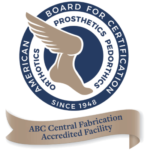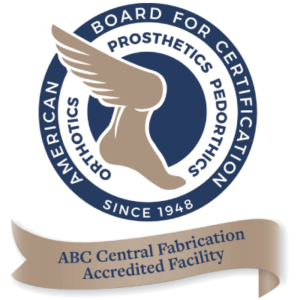The field of prosthetic technology is rapidly evolving, offering patients more functional and lifelike prosthetic devices. These advancements are revolutionizing how medical professionals approach patient care, offering new levels of mobility and comfort. Grace Prosthetic Fabrication is at the forefront of these innovations, providing cutting-edge solutions in prosthetic fabrication.
In this blog, we’ll explore the latest advancements in prosthetic technology, discuss their implications for healthcare professionals, and explain how these innovations are transforming patient outcomes.
1. 3D Printing in Prosthetic Fabrication
One of the most significant advancements in prosthetic technology is the rise of 3D printing. This technology allows for the rapid fabrication of customized prosthetics that perfectly fit the patient’s body, improving comfort and functionality. Medical professionals can now collaborate with prosthetists to design limbs tailored to individual anatomical requirements.
- Custom Fit: With 3D printing, prosthetic devices are built to match the exact measurements of a patient’s residual limb. This leads to enhanced comfort, reduced irritation, and improved mobility.
- Rapid Prototyping: Prosthetic fabrication using 3D printing accelerates the production process. Medical professionals can provide quicker solutions to patients, reducing wait times significantly.
- Cost Efficiency: 3D-printed prosthetics tend to be more affordable compared to traditional methods, making them more accessible to a broader range of patients.
2. Bionic Prosthetics and Advanced Sensors
Bionic prosthetics represent a significant leap forward in prosthetic technology, offering highly functional limbs that integrate advanced sensors and motors. These prosthetics are designed to closely mimic natural limb movement, providing users with unprecedented control.
- Myoelectric Sensors: Bionic limbs equipped with myoelectric sensors detect electrical signals generated by the muscles in the residual limb. This allows patients to control their prosthetic with precise, natural movements.
- Artificial Intelligence (AI) Integration: AI plays a crucial role in refining the movements of bionic prosthetics, learning the user’s typical movements to make the device more responsive and intuitive.
- Enhanced Mobility: With bionic technology, patients can perform complex movements like grasping small objects, climbing stairs, or even typing. For medical professionals, this opens new rehabilitation opportunities, as patients regain higher levels of independence.
3. Lightweight and Durable Materials
Recent advancements in material science have allowed for the development of lighter, more durable prosthetics. Medical professionals should be aware of these material innovations, as they can significantly impact patient comfort and long-term wearability.
- Carbon Fiber: One of the most popular materials in modern prosthetics, carbon fiber is lightweight yet extremely strong. Its flexibility and strength make it ideal for active patients, including athletes, as it can withstand high levels of stress.
- Thermoplastics: Another breakthrough in prosthetic materials, thermoplastics offer a balance of flexibility and strength, making them ideal for both lower and upper-limb prosthetics.
These materials not only improve the durability of prosthetic devices but also reduce the overall weight, which is a critical factor for patient comfort and daily use.
4. Smart Prosthetics with Connectivity
Another breakthrough in prosthetic technology is the development of smart prosthetics that connect to apps and devices via Bluetooth or Wi-Fi. These prosthetics allow patients to customize and control their devices through smartphones, making it easier to adjust settings like grip strength or movement speed.
- Real-Time Adjustments: Patients can fine-tune their prosthetic’s performance in real-time without needing to visit a clinic, providing greater autonomy.
- Data Monitoring: Smart prosthetics collect data on usage patterns, which can help medical professionals monitor patient progress and optimize the device for better performance.
This level of connectivity also aids in troubleshooting, as prosthetists and healthcare providers can remotely assess issues and make recommendations for improvements or adjustments.
5. Innovations in Prosthetic Liners and Interfaces
A key challenge in prosthetic fabrication has been ensuring that the interface between the prosthetic and the residual limb is comfortable and secure. New advancements in prosthetic liners are addressing this challenge.
- Gel Liners: Modern gel liners cushion the limb and reduce skin irritation, providing a more comfortable fit. This is particularly beneficial for patients with sensitive skin or those prone to pressure sores.
- Breathable Materials: Some liners are made from breathable, moisture-wicking materials that keep the residual limb dry and comfortable, which is crucial for long-term wear.
These advancements not only improve the patient’s comfort but also help prolong the lifespan of the prosthetic device by reducing wear and tear.
6. Microprocessor-Controlled Prosthetic Joints
Microprocessor-controlled joints represent one of the most significant advances in prosthetic knee and ankle design. These joints, which include sensors and processors, allow the prosthetic to adapt to the user’s movements in real-time, providing smoother and more natural motion.
- Adaptive Walking: These microprocessor-controlled joints can detect changes in terrain and walking speed, allowing the user to transition smoothly from walking on flat surfaces to climbing stairs or walking on uneven ground.
- Reduced Falls: One of the primary benefits of microprocessor technology is the reduction in falls, especially for lower-limb amputees. The prosthetic adjusts in real-time to provide greater stability and prevent stumbles.
- Improved Gait: For medical professionals, this technology offers patients a more natural gait, which can improve their overall mobility and quality of life.
7. The Role of Medical Professionals in Prosthetic Care
As prosthetic technology continues to advance, the role of medical professionals is more important than ever. Physicians, physical therapists, and prosthetists must work together to ensure that patients receive the most effective and personalized care possible. Medical professionals should stay up-to-date on the latest innovations to provide informed recommendations and optimize rehabilitation outcomes.
- Collaboration with Prosthetists: By working closely with prosthetists, medical professionals can help customize prosthetic devices based on the patient’s specific needs, lifestyle, and goals.
- Ongoing Support and Rehabilitation: The success of modern prosthetics depends heavily on proper rehabilitation and support. Medical professionals play a vital role in guiding patients through the adaptation process, ensuring that they can use their prosthetics to the fullest potential.
Contact Grace Prosthetic Fabrication for Custom Prosthetic Fabrication
The landscape of prosthetic technology is evolving rapidly, offering patients unprecedented functionality and comfort. Medical professionals must be aware of these advancements to provide the best possible care and improve patient outcomes. From 3D printing to bionic limbs and smart connectivity, the future of prosthetics is bright, and companies like Grace Prosthetic Fabrication are leading the way in delivering cutting-edge solutions.
For more information on the latest innovations in prosthetics, contact Grace Prosthetic Fabrication and learn how these advancements can benefit your patients.






